Ear Accessory
 Wednesday, December 2, 2015 at 22:40 tagged
Wednesday, December 2, 2015 at 22:40 tagged  design,
design,  ear,
ear,  hearingaids,
hearingaids,  listening,
listening,  workshop
workshop 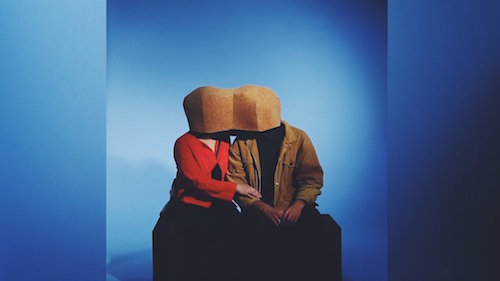
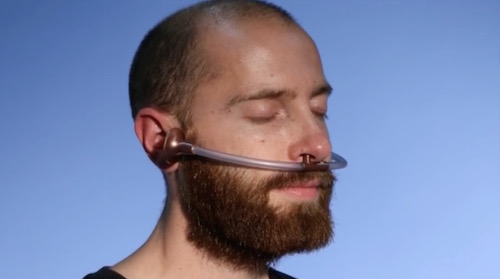
 Wednesday, December 2, 2015 at 22:40 tagged
Wednesday, December 2, 2015 at 22:40 tagged  design,
design,  ear,
ear,  hearingaids,
hearingaids,  listening,
listening,  workshop
workshop 

 Monday, January 26, 2015 at 10:32 tagged
Monday, January 26, 2015 at 10:32 tagged  dance,
dance,  fivesoundquestions,
fivesoundquestions,  interview,
interview,  listening,
listening,  soundart
soundart
Jeff Mills is largely regarded as an innovative techno DJ or producer. More recently, he’s been adopting his ideas, concepts, stories and esthetics from the outset. Since 2000, he’s been pushing further than his DJ fame. Started with creating a soundtrack for Fritz Lang’s “Metropolis”, his interest in the future and science-fiction grew, and over the years he has made various sf-inspired works. For example, a more recent work is “Man of Tomorrow”. Featuring Mills’ poetic sounds and Caux’s invasive cinematic imagery, it is a portrait of Mills portraying his immense perception of the future. Other examples include him imagining a series of strange avant-garde objects questioning our relationship with the world, space and time. 1. What sound from your childhood made the most impression on you? The sound of the ice cream truck that used to come through all Detroit neighborhoods. One sound of the iconic music the driver would play out of his loudspeaker would send any kid into a frenzy. The trick would be to run home, asked your parents for money, then catch up and stop the truck. It was almost like capturing a White Unicorn Horse. Every kid was conditioned to react immediately to the sound of the truck music. 2. How do you listen to the world around you? In various ways. Because I only speak English, I’ve leaned to read body, hand and eye movements very well, so I may not know exactly what is being said, but I can detect the sentiment. As a career DJ, it’s taught me to listen to multiple things at the same time. Consuming more reality than the average person. It’s made me much more attentive to everything around me. A drawback is that sometimes, my focused attention can be taken away too easily because I’m quite sensitive. 3. Which place in the world do you favor for its sound? New York City. The city never sleeps. It’s like an alarm clock they never shuts off. Crazy, but I love it. 4. How could we make sound improve our lives? I think we can improve our lives with sound by trying to achieve true silence first. Then by strategically applying sound would make us more appreciative for the sounds that are more relevant. Like a baby crying or laughing, people having a conversation, nature, the sounds of life in general. 5. What sound would you like to wake up to? The sound of the ocean. Thanks Jeff! See answers by other artists in the Five Sound Questions section.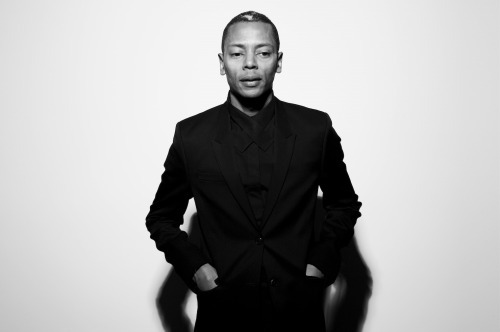
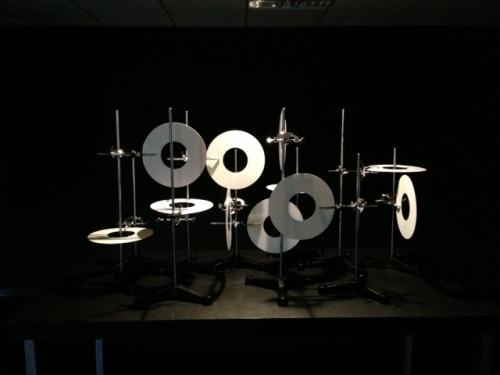 Jeff Mills, Tomorrow + X, 2013 (c) Axis Records / 10 unique white records produced by Jeff Mills, iron spots and hands.
Jeff Mills, Tomorrow + X, 2013 (c) Axis Records / 10 unique white records produced by Jeff Mills, iron spots and hands.
Beginning 2015, Mills exhibits his new work The Visitor, a “UFO inspired machine”, whose language system would be a complete reinterpretation and restructuration of the TR-909 drum machine. Something we might feature later here on Everyday Listening. For now, we’ve asked him to answer the Five Sound Questions, and we’re honored to have him on the site!
 Wednesday, December 3, 2014 at 23:47 tagged
Wednesday, December 3, 2014 at 23:47 tagged  fivesoundquestions,
fivesoundquestions,  interview,
interview,  listening,
listening,  soundart
soundart 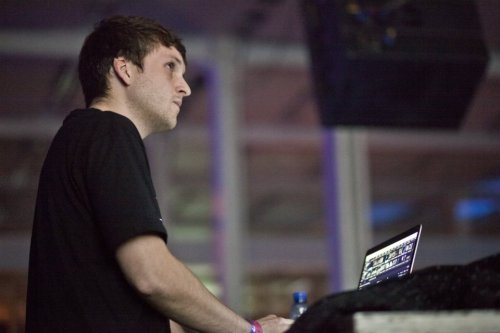
Oliver Jennings is an audio-visual artist creating moving image and sound in unconventional ways. His practice is concerned with looking for new approaches to generating moving image and sound, with particular interests in revealing hidden natural structures, soundscapes and patterns within unexpected and everyday objects. We’ve seen his work Every Object has a Spirit here at Everyday Listening.
In his most recent work, the award winning Bio-Symphony: Music of the Plants (above), which premiered at this years RHS Chelsea Flower Show, he used a device to read bio-feedback in plant life, which he then interpeted as musical information.
As Oliver is someone who connects the physical and the audible world in his work, I’m very glad to have him on the Five Sound Questions series.
1. What sound from your childhood made the most impression on you?
It may be a cliché, but the first time I was amazed by sound was when I was very young and wondered why if I held a shell to my ear I could I hear the sea inside it. To a young mind it seemed that the seaside was actually inside the shell. That was a first lesson in the transportive nature of sound that I can remember.
2. How do you listen to the world around you?
Even if you’re not consciously listening to the world around you, its frequencies are having an effect on you. Living in London, the sonic world seems to be on an endless loop, planes on the flight path create this strange high pitch wining noise like a drone which is constant, and always there in the background almost anywhere in London. This must have a subtle psychological effect on us. I think when you leave your usual area, the difference in sound is what effects your senses the most and changes your mood and opens up new emotions and feelings.
I love to try and listen to the sum of all the noise. If you are standing high up in a building with a view of London and try and focus on the wall of white noise that emerges from the whole city and think about the endless people, machinery, and movement that its made up of and somehow ends up as a rounded hum. Being able to then tap into secret and hidden soundscapes of singular objects is an amazing escape into a different world, a contact mic on the millennium bridge in London was my favourite experience of this. A hidden world of tortured orchestral sound which only I could hear out of the thousand tourists crossing the bridge, when I pulled the contact mic out the recorder I was in a different world within a fraction of a second.
3. Which place in the world do you favor for its sound?
Lewes In East-Sussex on Bonfire Night is my favourite sonic environment. One of the most famous and oldest bonfire nights in the world the whole town turns into a crazed environment. It’s a very stressful sonic environment but one which transports you back in time with sounds of marching, pagan rituals and bangers going off consistently for 24 hours, bonfires the size of houses and absolutely no cars. It’s the closest experience to being transported back in time to the middle ages.
4. How could we make sound improve our lives?
I think we should bring the way sounds function in the cinema into the real world. We already know that quite often accurately recorded sound adds nothing to the experience of an image in film. It’s always enhanced and manipulated to create an exciting new reality, quite often when sounds are distorted so they no longer correspond with the image, they create the most exciting audio-visual experience.
I think it would be great to use this cinematic enhancing property of sound in certain aspects of the real world, to make everyday things more fun and give genuine appeal to things which are difficult to motivate people to do. For example, imagine a headpiece that allows you to swim through pure silence so it feels as if you are swimming through air, for instance. I think this could be like bringing cinema into a new sensory dimension. People underestimate the power of experiencing something with separate sounds. In a world full of noise it could be a welcome escape from the familiarity of every day.
5. What sound would you like to wake up to?
I love waking up to the sound of rain, especially in a tent, another cliché, but it is the most calming feeling in the world.
Thanks Oliver! See answers by other artists in the Five Sound Questions section.
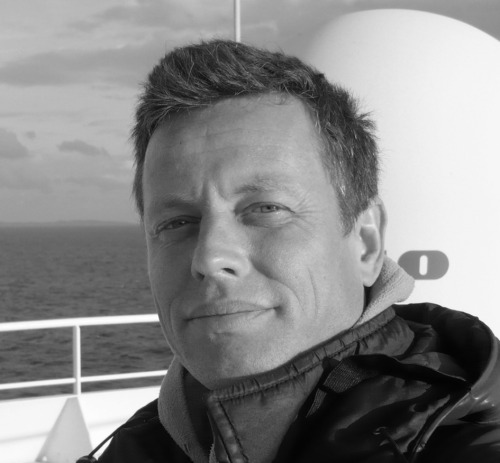
Ronald van der Meijs is a Dutch artist working with physical objects and sound from an architectural perspective. We saw one of his works, If I Should Live in the Past, I Wouldn’t Need a Memory last week.
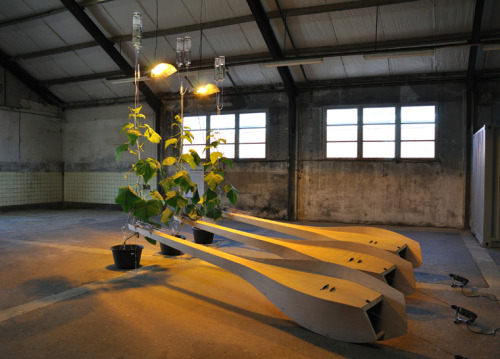
One of his latest works, Parthenocarp, is a big string instrument slowly transforming it’s sound as the connected cucumber plants grow. The growth of the vegetable plays the instrument.
As I was very intrigued by most of his works I’ve seen, I’m glad to have him on the Five Sound Question series!
Also check out an exhibition with six of his solo works from 2nd of December 2014 until 28th of February 2015 in Assen, the Netherlands.
1. What sound from your childhood made the most impression on you?
It was in an early stage, still in my childhood that my own voice started to get darker and lower already, while my friends still had a high-pitched voice.
I was intrigued by the resonance in my chest. When I set on a wooden bench and made my voice real low the wood of the bench started to vibrate. Also when I was picking up the phone a lot of people thought it was my dad. They started to talk to me if it were my dad they were talking to. I was still very shy, so it was hard for me to interrupt them and tell them they were not talking to the old man himself but to his son.
2. How do you listen to the world around you?
With an open mind and real ‘open’ ears for details. I noticed many people don’t hear the details. But of course it has my attention because of my work. I relate to it. And I’m always looking for special sounds that have an appealing quality.
3. Which place in the world do you favor for its sound?
None in particular. Every place in the world has its own qualities and specific sounds that can be interesting. For example when you go to India there is that typical ‘blow horn’ sound of every car on the street.
While on the streets in cities there is always a lot of background noise, empty buildings can be very nice because of it’s heating system and some hissing airco sounds. It’s like the organs of a building. Although I have to say in nature, sounds can be very clear and thus more interesting.
The most striking sounds I’ve heard were on a glacier in Iceland. Complete silence except from the cracking and echoing sound of moving, grinding ice masses. To hear this in such a hostile and out of space environment is really thrilling.
4. How could we make sound improve our lives?
By listening to it more, and having more patience in life. Standing still for a moment and really listening to the environment. For example when people go for a walk in nature, they’re always chatting with each other, and looking down instead of being quiet and listening to the surrounding nature and the wind blowing true the treetops. It has a real nice peaceful and relaxing quality to it. To enjoy it you need to be quieter yourself.
5. What sound would you like to wake up to?
I think with tropical bird sounds, crickets or Gibbon monkeys in a tropical forest and the sound of croaking frogs in a rice field at night. Not four or ten, but thousands of them at once. I simply love nature.
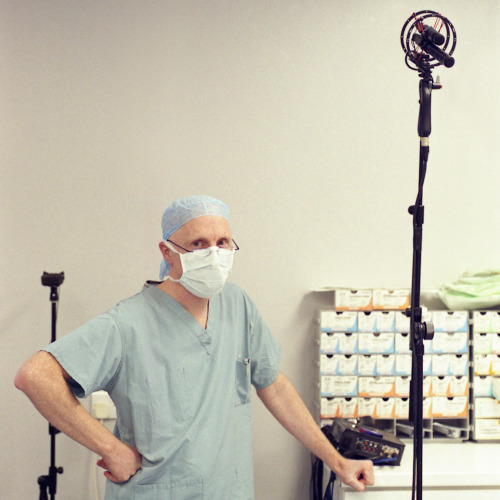 Picture by Tim Wainwright.
Picture by Tim Wainwright.
Last week we saw John Wynne’s 300 Speakers, Pianola and Vacuum Cleaner, and also new site-specific works for “The Flux, and I” which is on in London until the 22nd of June. The delicate sounds of the huge installation were quite intriguing, so I am quite honored to have him answer the Five Questions.
1. What sound from your childhood made the most impression on you?
I remember being 8 or 9 years old and living in Cold Lake, in Canada, running around at night with a couple of friends, unscrewing Christmas light bulbs outside people’s houses and stamping on them while they were still hot, just to hear the popping sound they made. I’m not sure whether the physics is right, but it seemed to us that the sound was louder because the bulbs were hot and it was very, very cold outside. But what I also remember, as much as the sound, was that I felt guilty about this experiment in vandalism and immediately told my mother about it. Much to her credit, I wasn’t punished, I guess because I obviously recognised that it was wrong and clearly had no intention to go on to a life of social irresponsibility. But just writing about this has triggered a forgotten memory from around that time in my life: we were living on the air base at Cold Lake, and there was a loud siren that went off at night to mark a curfew for children under a certain age. It also went off when they were about to fly over the base spraying insecticide, which I’m sure was very unhealthy, given that this was decades ago. I wonder if that sound, a classic air-raid type siren, had anything to do with my later fascination for alarm sounds: I’ve designed many auditory warnings for installations and other sound works over the years.
2. How do you listen to the world around you?
Sometimes it seems like the world of sound art is a competition to see who can be the most sensitive listener. I think I’d go mad if I were hypersensitive to sound all the time. In fact, when I was younger I suffered from tinnitus, and I had lots of hearing tests and brain scans which revealed nothing wrong, physiologically. Then I read Cage’s account of his experience in the anechoic chamber and realized that at least part of my problem was that there was a feedback loop between listening to the sounds of my own body and worrying about what I was hearing – the more I worried, the louder it got. I try to be attentive to my environment and prepared to notice interesting transient sounds when they happen, but sometimes I turn my attention elsewhere. While I was making the two site-specific installations at Gazelli Art House recently, I began by opening myself up to sound, including the ambient sounds of the gallery and the street outside, but by the end of the process, a week or so later, I was completely numb and once the work was done I didn’t want to hear anything at all for some time.
3. Which place in the world do you favor for its sound?
There’s a secluded lake in Canada where my partner and I spend a lot of time when we go back in the summer. You have to hike in to it, there are no occupied houses around it, and no boats are allowed, so it’s exquisitely peaceful. The lake is surrounded on two sides by tree-lined cliffs and is set in a naturally bowl-shaped landscape, so when the geese and other water birds come and go the echoes of their voices and the sounds they make landing and taking off are extraordinary. Even when teenagers arrive on holiday weekends to risk their lives on the massive rope swing on the other side of the lake, the way the sound of their shouts and splashes travels slowly across and around the lake is so interesting it almost makes up for the intrusion. But of course it’s not just the sound that I love about this place – the water even feels better than anywhere else I know and is so clean you can drink while you swim.
4. How could we make sound improve our lives?
Make less of it. Ever since Hildegard Westerkamp mentioned it to me years ago, I’ve noticed that as I get older, the frequency range of my hearing shrinks but at the same time I become more sensitive to high sound pressure levels. The noise in some public places is intolerable for me at times, yet if I compare my hearing to that of my students, who have no problem functioning in noisy environments, some of them find very high frequencies (that I hear only faintly or not at all) quite painful. Age-related hyperacusis (reduced tolerance to noise) is compounded by a decreased ability to ‘focus’ on a single voice in noisy environments. I do appreciate ‘noise’ aesthetically sometimes and some of my own work gets pretty intense at times, but these days I’m generally more interested in the lower threshold of hearing than the upper.
5. What sound would you like to wake up to?
I love Rutger Zuydervelt’s response to this question: Fuck it, I’m going to answer with the most cliché answer ever. I’m afraid birdsong was the first thing that came to my mind, too. Shortly followed by the sound and smell of coffee wafting around me on a light, warm breeze.
Thanks John! Also read the answers of other artists in the Five Sound Questions section.
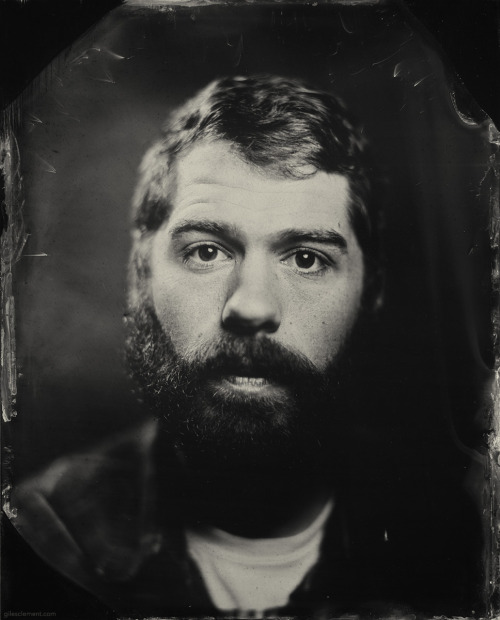
I recently had the pleasure to support Gordon Ashworth in Utrecht, The Netherlands. Using only a handheld recording device playing recordings made during his travels and two fourtrack cassettedecks sharing a tape-loop, he played rich textures interwoven with noisy field recordings adding layer upon layer as he went along.
His album S.T.L.A. definitely captures the same spirit. Gordons music walks the fine line between abstract and melodic. As I was quite intrigued by his album, I decided to ask him for the Five Sound Questions series.
More sounds and info can be found at www.gordonashworth.com.
1. What sound from your childhood made the most impression on you?
An old grandfather clock in our living room that played “Westminster Chimes.” It played little versions of this melody in E major every 15 minutes for like 18 years of my life. It was next to the upright piano my Mom used to play, so that side of the living room was always associated with music.
2. How do you listen to the world around you?
Obsessively, because I’m always listening for interesting sounds, and because I have problems with my ears and I’m constantly adjusting pressure or analyzing my hearing quality. When I travel, I’m always seeking sounds and chasing them for field recordings, which is a strong reason that I like to tour alone. I’ve gotten used to finding and using public maps after getting lost while following sounds in new places.
3. Which place in the world do you favor for its sound?
Once I was inside the narrow spiral staircase of the cathedral in Köln, Germany when the bells began to ring… that was a very heavy acoustic experience. I love the surreal mood that surrounds bells drifting through a city at morning and evening, something seemingly common in Europe but rare in the USA. I really like street musicians and the cries of street vendors, especially in Mexico. I’d like to travel through a lot of Latin America and the Caribbean for this reason. I remember hearing beautiful early morning sounds once in Adelaide, Australia. I like how Napoli sounds like chaos.
4. How could we make sound improve our lives?
Music is so closely connected with emotion and empathy, it seems obvious that it can powerfully effect and help people emotionally. We could also benefit from a lot more quietude, especially those of us that live in dense, urban environments. If people would generally open up to sound art, it would be really rewarding. I think there are still a lot of people that think art must be visual, and sound must be musical.
5. What sound would you like to wake up to?
Real silence.
Thanks Gordon! Also read the answers of other artists in the Five Sound Questions section.
 Thursday, July 12, 2012 at 17:32 tagged
Thursday, July 12, 2012 at 17:32 tagged  listening,
listening,  ssoundwalks
ssoundwalks 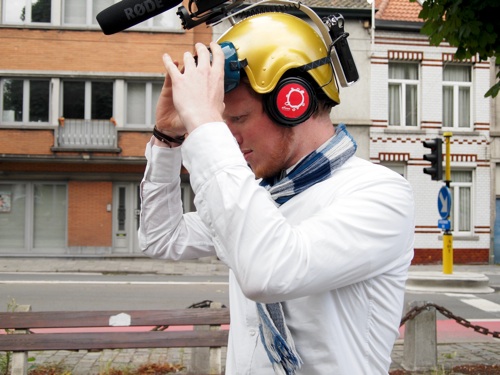 Me wearing the Blind Date helmet, getting ready for an unusual sonic exploration of the city of Ghent
Me wearing the Blind Date helmet, getting ready for an unusual sonic exploration of the city of Ghent
During our visit to TRACK in the beautiful city of Ghent, we were invited to discover the city in a whole new way. Blind Date is a project by the Belgian art-education organization Aifoon. Visitors are given a helmet equipped with headphones, a directional microphone and goggles blocking all visible impulses. Wearing these helmets we were guided through the city by Aifoon’s Jeroen van de Sande.
Walking around while not being able to see anything is scary at first. But normally we use our ears a lot in our everyday navigation, listening to the reflection of sound on all kinds of surfaces around us and and we depend on our ability to hear where a sound is coming from. Blind Date shuts off these normal auditive senses and replaces them with directional hearing: it focuses your hearing (in mono) on wherever you turn your head towards and amplifies it. Here’s a video about the Blind Date experience:
At first I found this impairment quite frustrating, as I heard what seemed to be a very large truck passing by, but I wasn’t able to tell if it came from the left or from the right. I was just standing there helplessly. I wanted to listen to the world in stereo like I normally do. The trick is to fully trust the person that takes you by the arm and leads the way. You have to surrender to the experience and once you do, it’s interesting and surprising.
I wasn’t able to tell what the streets we walked on looked like, it was very hard to measure the distances we walked. We crossed a wide road, but to me it seemed very small. It was a windy day, which resulted in quite a bit of noise on the headphones at times. Normally I would hate that, this time it also disabled my sense of hearing for some time, making me completely dependent on tactile information from my guide.
If you’d like to visit Ghent (I highly recommend it!) and experience Blind Date yourself, have a look at the agenda on the TRACK website for dates.